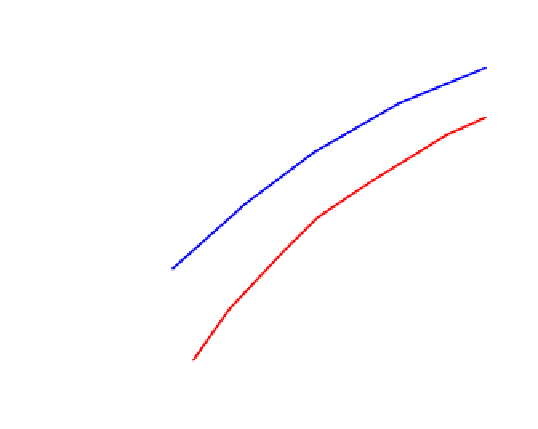Information Technology Reference
In-Depth Information
presented to a dead-zone scalar quantizer [47, 48]. The remaining fifty-four high
frequency bands are quantized using a uniform scalar quantizer with a step-size
varying from Δ=1 to Δ=70. After coding, the resulting coded bit stream is sent to
the decoder. The optimal reconstruction bias used in the dequantization process is
r=0.4. In the next section, the results of the 3D DWT based algorithm are pre-
sented and compared to those of previously experimented 2D DWT scheme on
omnidirectional 3D holoscopic image data.
5.4 Simulation Results and Discussions
The 3D DWT based compression algorithm has been implemented for simulation
using the several 3D holoscopic test images. The performance of the encoder and
decoder was measured in terms of the Peak Signal to Noise Ratio (PSNR) and the
compression achieved expressed in bits per pixel (bpp). Figure 12 shows plots of
PSNR versus bit rate for the proposed scheme and the previously experimented
2D DWT based model. From Figure 12, it can be seen that the 3D DWT based al-
gorithm shows a higher improvement in PSNR for all bit rate values compared to
the previous reported 2D DWT based scheme [47]. Table 1 shows bit rate values
resulting from both methods simulated for a typical quality requirement. As we
can see from Table 1, 1.42 dB are gained at 0.1 bpp and an improved performance
by an average of 0.94 dB (average of PSNR values at 0.1, 0.2, and 0.3 bpp) is
achieved by the proposed compression algorithm when compared to the previ-
ously experimented 2D DWT based scheme.
37
Proposed 3D DWT based algorithm
Initia l 2D D WT ba s e d a lgor ithm
36
35
34
33
32
0
0.05
0.1
0.15
0.2
0.25
0.3
Output bitrate/bits per pixel
Fig. 12
Performance of the proposed 3D DWT based compression algorithm and the 2D
DWT based scheme for compression of 3D Holoscopic images













































